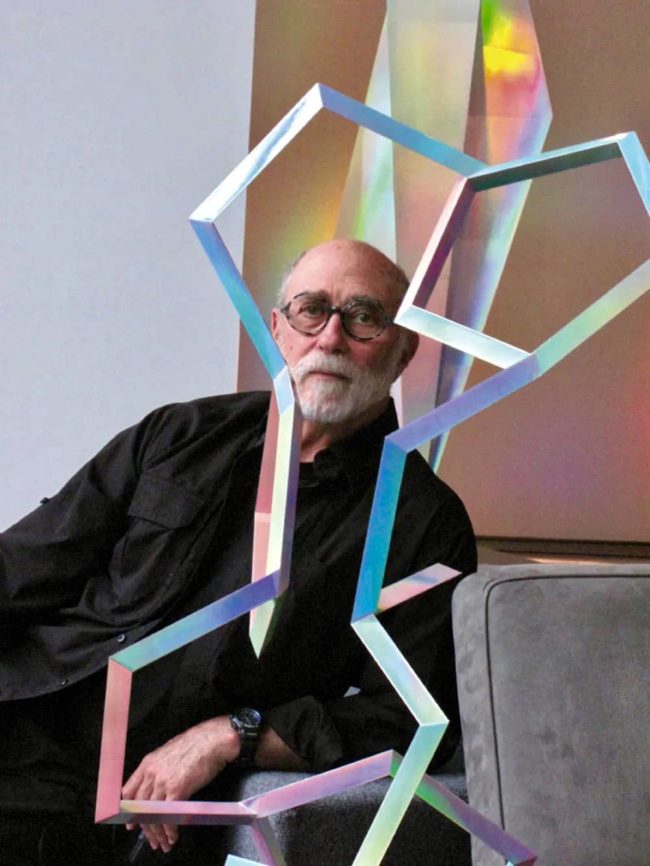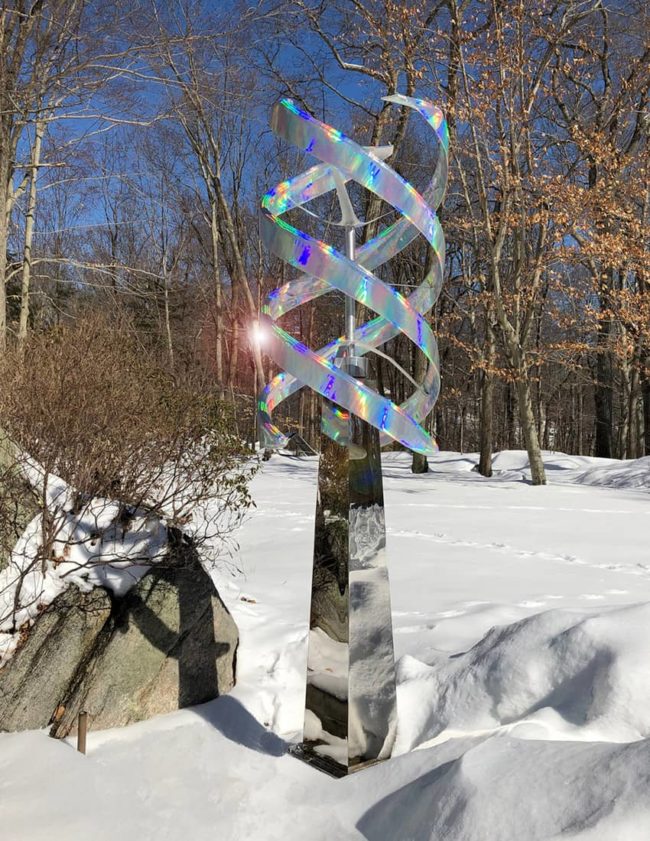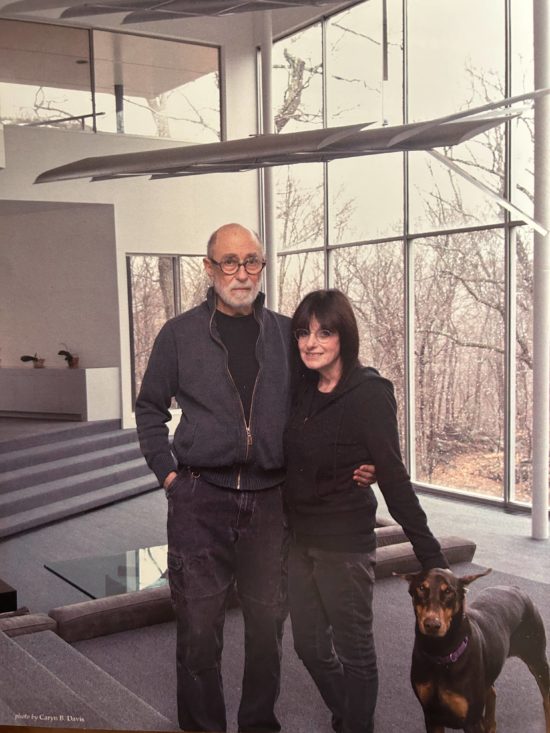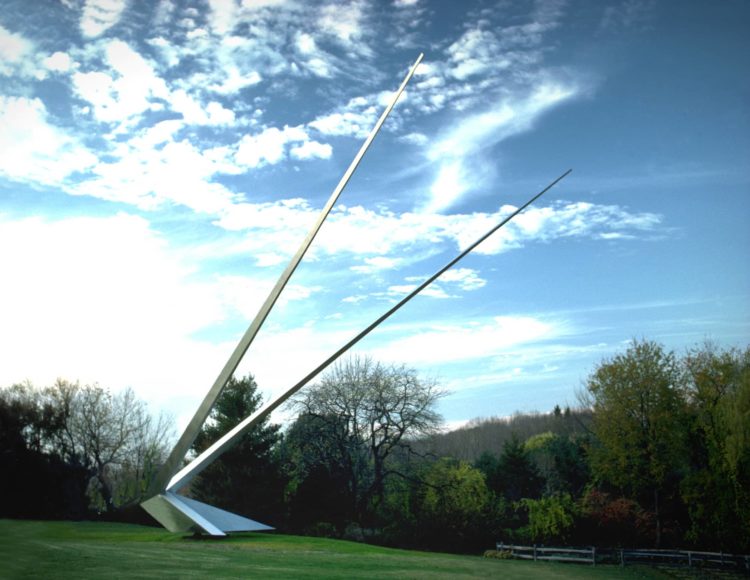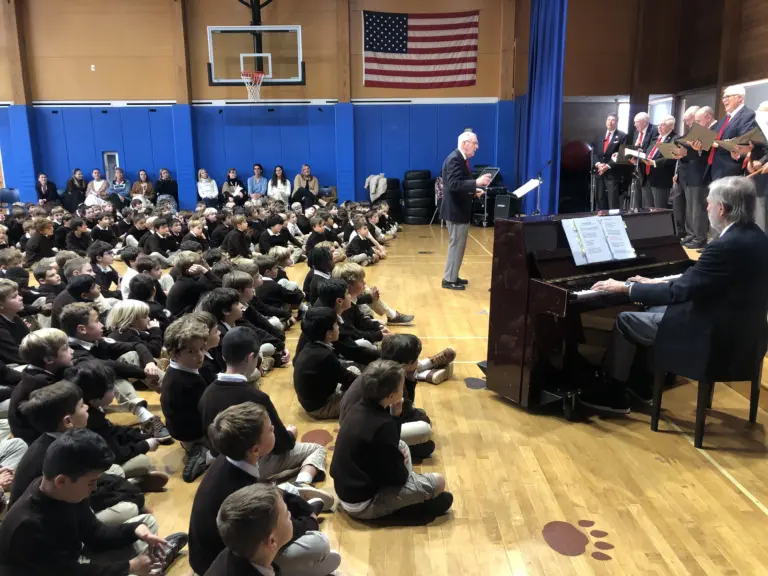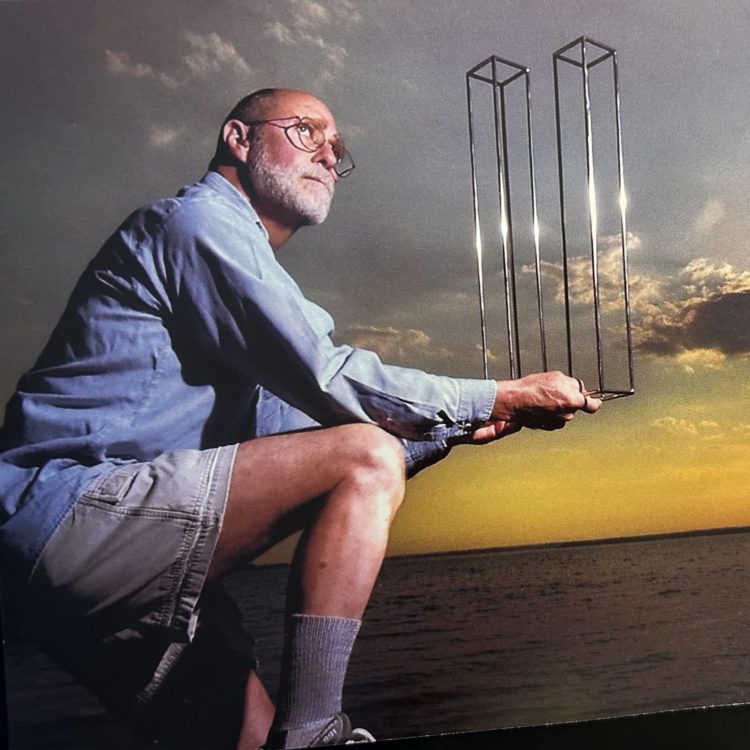
By Anne W. Semmes
Artist Robert Perless whose sizeable and unique kinetic sculptures became public artworks in cities, museums, colleges, and corporations across the nation, who lived and created his art in his backcountry Greenwich home and hanger-size studio for over four decades, has died, at age 85.
Ellen Perless, his wife of 58 years, tells the story of his demise. “He had hand built his steel house in 1982. He was headed for the roof to clean out the roof drains. He did it, age 84, just fine. I tried to discourage him with, ‘Let’s get somebody else to do it for you.’” Perless, fearless, slipped and fell and died from his injuries on September 8.
And what was Robert Perless working on when he died? His inventive “Energetics,” a double helix shaped sculpture that projects rainbows – to be utilized as a small wind turbine. “Which is an entirely new concept in sculpture,” says his widow. “Robert was very concerned, as we all are with the environment and the terrible toll on the environment that fossil fuel is causing. And these sculptures would actually act as vertical axis turbines [now patented]. And one that was built 20-feet high would generate enough electricity to run a good-sized house. Not necessarily one of the enormous houses, but probably this house.”
“And we never intended that Robert would actually build them in the studio,” she continues. “They would be built by fabricators, which is very different from what Robert has done with his sculptures, which were all built by himself and his assistants. So, my thought is that I am going to put together some people to work with me. I’m going to get an engineer on board. I’m going to get angels to finance the company, and I’m going to go forward with it.”
But perhaps she will change the name from Energetics. “If they had been going in a gallery, they would’ve been called the Energetics. But I think I’m going to call the company something else.”
Artworks that sculptor Perless was particularly proud of his widow describes. “He did a couple of very large works that were unique and wonderful. Stargon is one of them. It’s been at Bard College since 1987 [Ellen Perless is a Bard graduate]. It’s a gigantic wind vane, 80-feet long, donated by a collector and Bard patron who had it at their New Canaan house… And the Bard kids love it. Dancers have done this senior project dancing on and around it.”
Another is his Orion’s Belt in Corpus Christi, Texas. “Orion’s Belt is three [kinetic] wind vanes, each 60-feet long, representing the three major stars in Orion’s Belt. And the secondary stars in the Constellation are represented by 14 stainless steel pavers placed throughout the city of Corpus Christi, with the name of the star it represents, along with an engraved glyph of the Orion Constellation.” And each is placed where it could be sited by celestial navigation – “something Robert and I employed in our offshore sailing travels.”
So, what does Ellen Perless see as Robert Perless’ greatest accomplishment? “That’s a really good question,” she says. “I think that his background in sailing informed his work in a way that really separates it from even much more famous kinetic sculptors. Because the works literally operate, most of them, the way sailboats operate. And they don’t move willy-nilly in the wind.” She cites for instance how Corpus Christi has been hit by category five hurricanes, and through it all, his artwork of Orion’s Belt “just points up wind into it. They’re completely stable.”
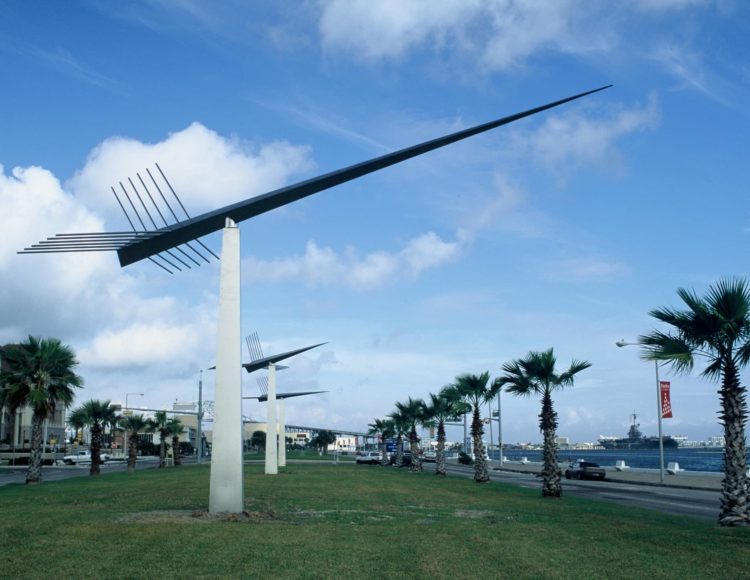
And then there were those sculptures that didn’t feature movement, but “refracted rainbows.” “So, they dealt with light instead of actual movement,” she tells, “And the light moved through the room or through the landscape, as the sun moved through the sky. For instance, the piece that’s outside the house that is made out of those large polymer prisms refract rainbows. And if it were a nice sunny day, we would have big rainbows moving across the floor and they do move. So, they are kinetic in their own way.”
She adds, “He also was an extraordinary craft person. His work was exquisitely made, and he didn’t have fabricators build any of it. He had built it himself – with his assistant.”
But there was one sculpture to be built in his hometown that was a disappointment, as Ellen Perless shares, his “Ghost Towers” to be built off Greenwich Point to commemorate 9/11. “It’s where people witnessed it,” she adds. Perless was one of hundreds that day who gathered on Greenwich Point to watch in disbelief the tragic collapse of the World Trade Towers. “The effect would be a memorial,” he’d stated of his memorial, to rise some 40 to 50 feet above the water. But the Town voted it down as, “It was putting up a structure where there was nothing intrusive in that setting.”
The question was asked as to what artists had inspired Perless? Brancusi? “Yes, in his early works. Today, probably Richard Serra.” But maybe it was mainly his lifelong romance with the phenomena of nature. And in particular that of the world of sailing. “It’s the thing that made him who he was,” confirms his widow.
It is written that Perless grew up in Brooklyn, in Sheepshead Bay. A couple who lived on their motorboat in the bay were drawn to the young Perless to teach him navigation, to introduce him to the lure, the light, and love of the sea. From the age of nine he sailed. He has said, “Sailing gave me an understanding of wind power, how hulls went through the waters and how energy worked for us.”
That Perless youth had then gotten a degree in engineering. He learned how things work, and in the end how he could make things and make them move.
“It really is the way that the curve of the sail affects your performance,” Ellen Perless adds. “The way that the things hold it in place, the way of the curves of the boat. I think it’s very interesting that his earliest sculptures started with curvilinear work, then he did rectilinear work. And his last work is curvilinear again, like a boat and like a sail.”
